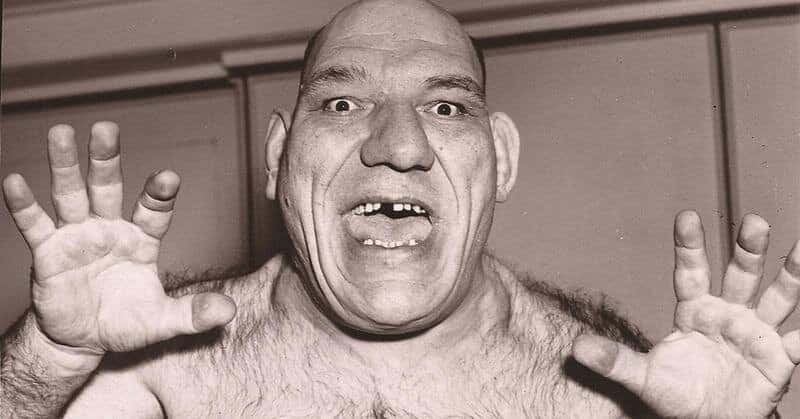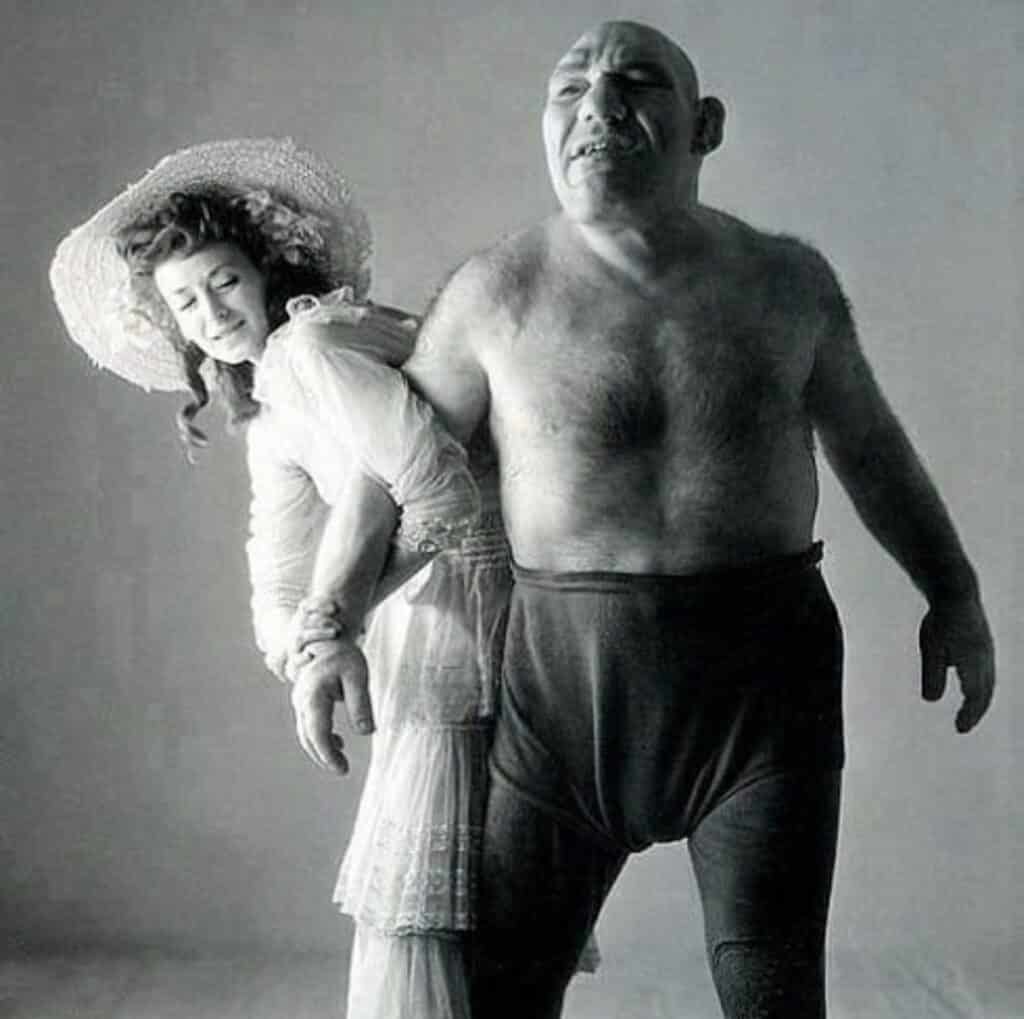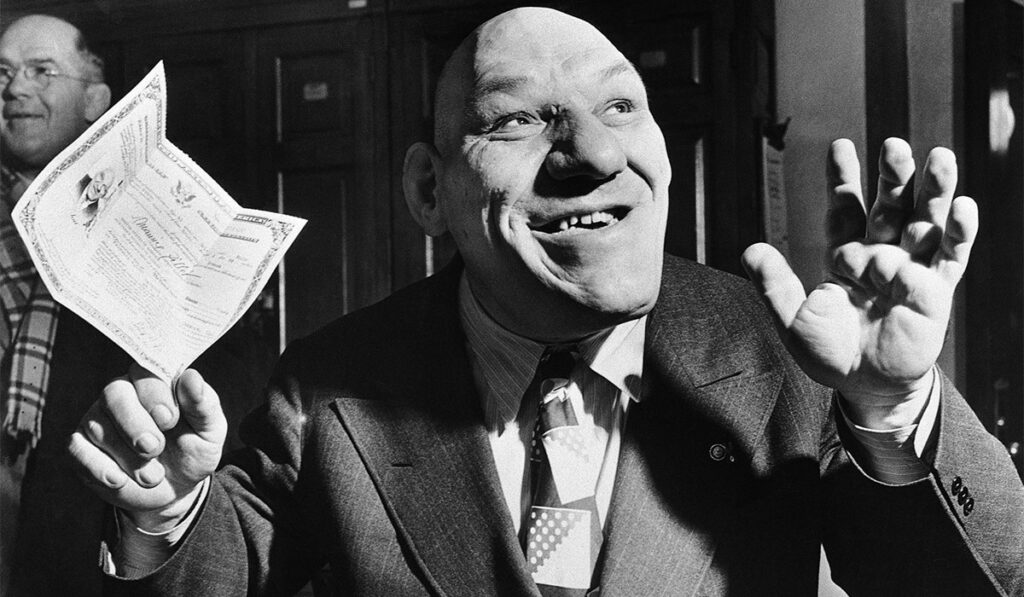Shrek is one of the most iconic animated characters of the last century. For years many have believed that a real-life man, Maurice Tillet, inspired the green ogre. Dreamworks has neither confirmed nor denied this, but the similarities are uncanny.

The Early Life of Maurice Tillet
Maurice Tillet, most commonly known by his professional wrestling name The French Angel, was born in 1903 in Russia.
His parents were both Fench, but for the first years of Tillet’s life, he was raised in the Ural Mountains, where his mother worked as a teacher, and his father was a railroad engineer.
Unfortunately, his life was filled with hardships from an early age, as his father passed away when he was very young. Tillet’s life was changed by his father’s passing, along with the 1917 Revolution, which forced his mother to relocate to France in the Reims region to avoid the potential dangers of the revolution.
The relocation brought about an entirely new environment in which Tillet was called to adapt and perform.

A Major Growth Spurt
In his early twenties, Tillet noticed a strange swelling in many parts of his body, including his feet, hands, and head.
The swelling was not something he could ignore. As such, he soon decided to visit a doctor who diagnosed him with acromegaly, a condition characterized by a benign tumor on the pituitary gland.
This condition resulted in both bone overgrowth and thickening of the bones. However, it also left Tillet with a unique appearance that, in many ways, would shape his life later on.
Tillet aimed at becoming a lawyer, and as such, he completed a law degree at the University of Toulouse. Because of his deep voice and his altered physical appearance, he soon decided that it was unlikely that he could succeed as a lawyer.
He made a career change, and he signed up to serve in the French Navy. He stayed in the French Navy as an engineer for five years.
The ‘French Angel’ Begins to Wrestle
There is no verified information on exactly how Tillet came to leave the Navy to become a professional wrestler, but rather a few different stories exist regarding this decision.
In all the stories, there is one common denominator – Tillet met Karl Pojello, a professional wrestler, in 1937.
Pojello, fascinated by Tillet’s unique appearance, convinced him to become a professional wrestler as he thought that Tillet would be a major draw.
The two moved to Paris, where Pojello started training Tillet, and soon the two began joining wrestling matches in France and England. For the next two years found success as professional wrestlers until the start of World War Two.
For the second time in his life, Tillet was forced to consider his options and relocate because of the turmoil in Europe. This time, he left for the United States in 1939, hoping to find more opportunities.

Life in the United States
While they had left much behind when they migrated to the United States, Tillet had kept his professional wrestling name – The Angel- which was a nickname that his mother had given him at a young age to characterize his pure and kind features.
The nickname was from a time before his condition, which altered his appearance, but it was one that he kept throughout his professional career.
When he migrated to the United States, he became better known as the ‘French Angel,’ and he drew crowds in because of his unique appearance and skill.
In the 1940s in Boston, under promoter Paul Bowser, Tillet became a main eventer who drew large audiences in. His popularity increased over the years, and he even had nineteen consecutive months in which he was not beaten in a single match.
His name and presence alone had made a huge impact on the wrestling world, and soon many Angel imitators emerged in the scene.

These famously included the Swedish Angel, the Russian Angel, the Canadian Angel, the Czech Angel, the Irish Angel, the Lady Angel, and many others. Tillet even competed against some of them like Tor Johnson, who was on those occasions referred to as the Swedish Angel.
Tillet’s career was not only monumental because of the fantastic crowds that he would draw but also because of his skill. He became the American Wrestling Association World Heavyweight Champion from May 1940 until May 1942, and even after that, he reappeared with a Boston-based title in 1944. His career, though, was short-lived as his condition soon started catching up to him.
Deteriorating Health
In 1945, his health began to fail, and, in his matches, he could no longer be advertised as unstoppable. Despite that, he remained close with his trainer and manager, Pojello, and continued to wrestle.
In the 1950s, with his career looking like it would imminently come to an end, he befriended sculptor Louis Linck who made a series of plaster busts to commemorate his wrestling career.
These are still exhibited today, and one can even be seen in Chicago’s International Museum of Surgical Science. Both his career and his condition had made him a spectacle and allowed him to build his legacy as the French Angel.
By 1954 his health had significantly declined, and within the span of less than a month, both Pojello and Tillet passed away. It is famously noted that upon hearing of his trainer’s and friend’s passing, Tillet passed away from cardiovascular disease.
The two were buried next to each other at the Lithuanian National Cemetery in Justice, Illinois. The French Angel lives on both through movies like Shrek and his legacy in the wrestling world. He was the world champion and remained undefeated for over a year.
His unique appearance helped introduce him to the world of wrestling, but it was his undeniable skill that allowed him to be one of the greatest.

